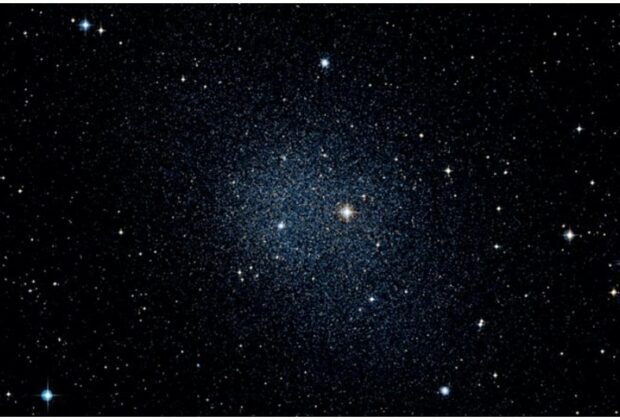Northwestern University scientists announced on Friday that they have established without a reasonable doubt that the supernova that destroyed a star 2.4 billion light years away from Earth in October 2022 was the source of the largest gamma-ray burst ever recorded.
Using NASA’s James Webb Space Telescope, the researchers ascertained that the collapse and subsequent explosion of a huge star was the phenomenon responsible for the historic blast of electromagnetic radiation, which was termed the “brightest of all time,” Northwestern said in a news release.
Ten times brighter than any previous known gamma-ray burst, the once-in-10,000-years event had eluded scientists’ ability to determine its cause until recently.
However, by observing the burst’s aftermath with the JWST, roughly six months later, scientists were able to identify the supernova that caused it, according to study lead Peter Blanchard.
“The GRB was so bright that it obscured any potential supernova signature in the first weeks and months after the burst. At these times, the so-called afterglow of the GRB was like the headlights of a car coming straight at you, preventing you from seeing the car itself. So, we had to wait for it to fade significantly to give us a chance of seeing the supernova,” he stated.
By viewing light at the infrared end of the light spectrum with JWST’s Near Infrared Spectrograph, Blanchard was able to observe the signature left by calcium and oxygen elements that occur within supernovas. To his surprise, he discovered that it was nowhere near as bright as expected given the GRB emanating from it.
“It’s not any brighter than previous supernovae. It looks fairly normal in the context of other supernovae associated with less energetic GRBs,” according to Blanchard. “You might expect that the same collapsing star producing a very energetic and bright GRB would also produce a very energetic and bright supernova. But it turns out that’s not the case. We have this extremely luminous GRB, but a normal supernova.”
By combining JWST data with observations from the Atacama Large Millimeter/Submillimeter Array in Chile, the co-authors from the Harvard & Smithsonian Center for Astrophysics, Utah University, Penn State, University of California, the Netherlands’ Radbound University, Space Telescope Science Institute, Arizona University/Steward Observatory, Columbia University, Flatiron Institute, Greifswald University, and Guelph University were able to distinguish between supernova light and that of the bright afterglow preceding it.
“Even several months after the burst was discovered, the afterglow was bright enough to contribute a lot of light in the JWST spectra,” Tanmoy Laskar, an associate professor of physics and astronomy at Utah University, stated. “Combining data from the two telescopes helped us measure exactly how bright the afterglow was at the time of our JWST observations and allow us to carefully extract the spectrum of the supernova.”
Even while the scientists are still figuring out how the same collapsing star produced both a record-breaking GRB and a “normal” supernova, Laskar hinted that it might have something to do with the structure and form of the relativistic jets that are created when huge, quickly rotating stars collapse into black holes.
The more focused and brilliant the light beam produced by a jet that is ejected at speeds almost equal to the speed of light, the narrower the jet.
“It’s like focusing a flashlight’s beam into a narrow column, as opposed to a broad beam that washes across a whole wall,” Laskar explained. “In fact, this was one of the narrowest jets seen for a gamma-ray burst so far, which gives us a hint as to why the afterglow appeared as bright as it did. There may be other factors responsible as well, a question that researchers will be studying for years to come.”
Graduate student Yijia Li of Penn State modeled the spectra of B.O.A.T.’s host galaxy and discovered that it had the lowest metallicity of all prior GRB host galaxies, which is a measure of the quantity of elements heavier than hydrogen and helium.
“This is another unique aspect of the B.O.A.T. that may help explain its properties,” Li stated.
Though the discovery answered the primary enigma, it also created a new set of paradoxes since, after nearly two years of searching, the researchers were unable to find any evidence of the heavy elements they had anticipated finding, platinum and gold.
“When we confirmed that the GRB was generated by the collapse of a massive star, that gave us the opportunity to test a hypothesis for how some of the heaviest elements in the universe are formed,” Blanchard of Northwestern University said.








